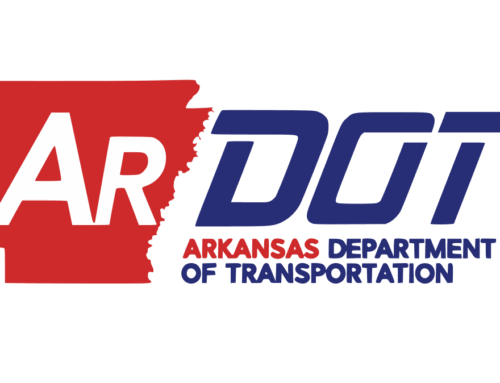In business models, “operations” refers to the various activities, processes, and functions essential for the organization’s day-to-day functioning and overall success in achieving its mission and serving its beneficiaries. You may understand operations as business processes, core functions, workflow management, execution, or systems and operations management. While these terms represent various aspects and perspectives of operations in a business model, they all contribute to the organization’s overall efficiency, effectiveness, and success.
Well-structured operations promote transparency and accountability within the nonprofit organization. Clear processes, documentation, and reporting mechanisms ensure that donors, stakeholders, and the public have visibility into the use of resources and the achievement of outcomes. Additionally, a well-functioning operational framework is essential for the long-term sustainability of a nonprofit organization. Streamlined operations can help reduce waste, overhead costs, and inefficiencies, making the organization more financially stable and resilient.
The components of an organization’s operations can vary, influenced by factors like its size, scope, and nature, particularly in the case of nonprofit organizations. We will examine these operational components more closely as we delve deeper into this topic. However, before we begin, let us review common elements frequently found in a nonprofit organization’soperations.
Governance and Board Management: A board of directors or trustees govern nonprofit organizations through oversight, strategic guidance, and governance. Governance and board management involve board recruitment, orientation, and facilitating effective board meetings. Effective governance and board management ensure strategic direction, accountability, and oversight of the organization’s operations and mission.
Programs and Services: This refers to the core activities that directly fulfill the organization’s mission. Nonprofits exist to provide specific programs and services to their target beneficiaries or to address a particular social or community need. The core activities that directly fulfill the organization’s mission are of utmost importance, as they represent the primary reason for the nonprofit’s existence and impact.
Finance and Accounting: Managing finances is crucial for any nonprofit. Financial management includes budgeting, financial planning, bookkeeping, managing expenses, and ensuring compliance with financial regulations and reporting requirements. Proper management of finances is essential for the organization’s sustainability, compliance, and effective allocation of resources to support programs and services.
Fundraising and Development: Nonprofits need funding to sustain their programs and operations. Fundraising involves identifying potential donors, crafting fundraising campaigns, events, and grant applications, and cultivating relationships with individual and institutional supporters. Nonprofits heavily rely on funding to sustain their operations and fulfill their mission, making effective fundraising and donor relationship management crucial.
Strategic Planning and Evaluation: Developing and implementing a strategic plan helps the nonprofit set goals, priorities, and strategies for achieving its mission. Evaluation involves measuring the organization’s performance and impact against its objectives. Developing and implementing a strategic plan enables the organization to set clear goals and measure its impact, ensuring efficient resource utilization and progress toward its mission.
Human Resources: The HR component deals with managingstaff and volunteers. This includes recruitment, training, performance management, compensation, and ensuring a positive work environment. A positive work environment and effective management of staff and volunteers contribute significantly to the organization’s ability to deliver programs and services successfully.
Compliance and Legal Affairs: Nonprofits must comply with various legal and regulatory requirements. This component involves ensuring compliance with tax laws, reporting to government agencies, and maintaining legal documentation.Ensuring compliance with legal and regulatory requirements helps the organization maintain its reputation, accountability, and public trust.
Technology and Information Systems: Nonprofits increasingly rely on technology to streamline operations and improve efficiency. This includes managing databases, website development, and utilizing fundraising, communications, and program management software. Embracing technology streamlines operations and enhances efficiency, allowing the organization to serve its beneficiaries and stakeholders better.
Public Relations and Marketing: Nonprofits mustcommunicate their mission, impact, and fundraising efforts to various stakeholders. Public relations and marketing involve managing the organization’s brand, media relations, social media presence, and community outreach. Communicating the organization’s mission and impact effectively helps raise awareness, attract donors, and engage the community.
Volunteer Management: Many nonprofits rely on volunteers to support their programs and operations. Volunteer management includes recruiting, training, and recognizing volunteers for their contributions because volunteers play a critical role in supporting the organization’s work.
Risk Management: Identifying and managing risks is important for the organization’s sustainability. This includes assessing and mitigating potential risks to the organization’s reputation, finances, and operations. Identifying and mitigating risks is vital for the organization’s long-term sustainability and achieving its mission.
Collaborations and Partnerships: Collaborations and partnerships play a pivotal role in the nonprofit sector, as organizations often join forces with other entities, including government agencies and businesses, to maximize resources and achieve a more significant impact. While these collaborative efforts are essential for expanding the organization’s reach and effectiveness, collaboration typically occurs once an organization has established operations processes. By solidifying governance, program delivery, financial management, and other vital areas, nonprofits can better position themselves for successful and sustainable partnerships that advance their mission and benefit the communities they serve.
The components of an organization’s operations work together to ensure the smooth functioning of the nonprofit organization, allowing it to effectively deliver its mission and make a positive difference in the communities it serves because community matters.
In community,
Dr. Pat
Patricia A. Clary is a consultant who champions the advancement of strategic community impact agendas to addressintricate societal challenges through collaborative efforts, convening leadership, and effective governance.
You can contact her through the following channels:
– LinkedIn: https://www.linkedin.com/in/pat-clary/
– Facebook: PatriciaAClaryPhD
© 2023 All rights reserved.






